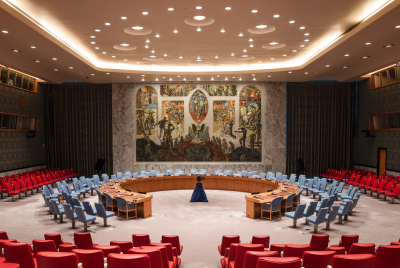Crisis Spreads as Alarm Signals Emerge for Asia too

It is time Karl Marx's classic opening statement of the Communist Manifesto is reworded into something on the lines of: "A spectre is haunting Europe - the spectre of a double dip. All the powers of Europe have entered into a holy alliance to exorcise this spectre."
The monster, who first surfaced in Greece this time around, is slowly extending its tentacles to the remaining nations on the continent, even as more and more countries are slowly walking into a debt trap. Interestingly, almost all the mighty powers that constitute the European Union are now looking to the East, for the first time in history, for an early resolution of the mounting crisis. However, if the latest developments on the economic front are anything to go by, certain alarm signals are emerging for Asia too.
Now, the million dollar question raised by experts worldwide is: Is Asia's immunity to a drastic meltdown just a myth or not?
During her first tour to China in her official capacity, International Monetary Fund Chief Christine Lagarde warned in no uncertain terms that the entire world was facing the risk of plunging into a spell of uncertainty and financial instability.
"Asia is not immune. Whether it is the trade channel or whether it is the financial sector which can operate as a crisis accelerator, Asia needs to be prepared," she warned.
Lagarde's warning is not just a generalization of the prevailing economic climate and the subsequent political turmoil in the Eurozone. The leading players on the Asian continent do have reasons to worry. The famed Asian model of economic endurance that helped the continent sail through the disastrous 2008 and 2009 seasons with remarkable ease is now facing a real litmus test.
An Asia-centric world order has been a favourite theme in anti-West, anti-capitalist political discourses for quite some time. Further, the growing importance of China and India as emerging political and economic powers has helped consolidate such theories. However, if Europe plunges into a double dip, it will definitely weigh on Asia's industrial activity too.
A few days ago, credit ratings agency Moody's, downgraded the outlook on India's banking sector from "Stable" to "Negative". Subsequently, top officials in India's finance ministry are supposed to interact with Moody's on Monday, as part of an exercise to review the country's sovereign rating. At the same time, Standard & Poor's services, another rating agency, came up with an upward revision for India's banking industry risk assessment to "Group 5" from "Group 6", bringing it to the league of countries like China, Turkey, Portugal and Thailand.
On the flip side again, India's factory output growth fell sharply in September, the slowest pace in two years, apparently due to high interest rates and unabating economic troubles in Europe. Surging food inflation and the spike in oil prices continue to threaten India's growth despite attempts by ministers and top officials to paint a rosy picture.
China, the other Asian giant, also faces mixed fortunes on the economic front. Inflation fell significantly in October, giving some room for policy managers to loosen the reins on the economy and pursue reforms. However, recent figures have shown that China's export growth dipped further in October as a result of the Eurozone debt crisis.
The closing years of the last decade saw the proverbial Celtic Tiger wither away. It is too early to predict for sure if such a phenomenon will be replicated in Asia in the years to come. Nevertheless, not all the signals are encouraging for the policymakers on the world's largest continent.
© Copyright IBTimes 2025. All rights reserved.





















